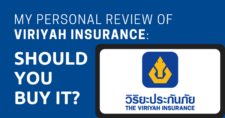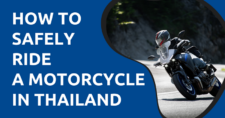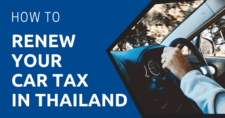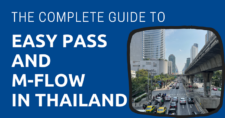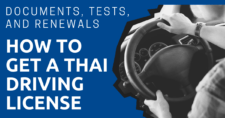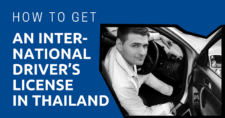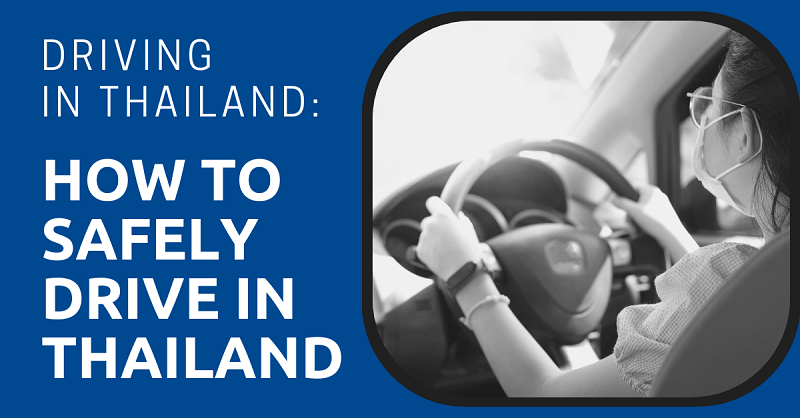
If you’re new to Thailand, the idea of driving in the country can be daunting to say the least.
Heavy traffic, confusing streets, and a sea of motorbikes zooming in and out of traffic can undoubtedly be intimidating. To the unfamiliar eye, driving in Thailand can look chaotic and dangerous.
Although caution is clearly advised, driving in Thailand is not as dangerous as it is made out to be. Nonetheless, driving in Thailand is not for the inexperienced. It takes acute awareness, focus, and a keen sense of your surroundings.
In this guide, I will answer some common questions and share some tips and advice I have learned while driving in Thailand so that you can drive as safely as possible in the country.
"*" indicates required fields
Disclaimer: This article may include links to products or services offered by ExpatDen’s partners, which give us commissions when you click on them. Although this may influence how they appear in the text, we only recommend solutions that we would use in your situation. Read more in our Advertising Disclosure.
Contents
Which License Can You Drive with in Thailand?
To drive in Thailand, you need to have either an International Driving Permit (IDP) or a Thai driver’s license.
Even if someone tells you that you can use a license from your home country to drive in Thailand, it’s illegal and you will get a THB500 fine, at the least.
Also, insurance companies in Thailand won’t cover you if you don’t have a Thai driver’s license or international driving permit.
Some companies might not rent you a car if you only have a license from your home country.
There are one main exception to this rule:
You have a driver’s license from one of the 10 ASEAN countries such as Malaysia, Singapore, and Philippines.
Related articles:
- How to Get an International Driver’s License in the USA
- How to Get an International Driver’s License in the UK
- How to Get an International Driver’s License in Australia
Road Conditions
Thailand’s roads, for the most part, are on par with many of the roads you’d find elsewhere in the world, unless you travel deep into the country side.
Of course, this will depend on what part of the country you are in. Road conditions will vary from city to city.
Main roads and highways tend to be better maintained. However, you should be aware of the difference in road conditions in less-developed parts of the country, such as back roads and islands like Koh Phangan and other smaller ones.
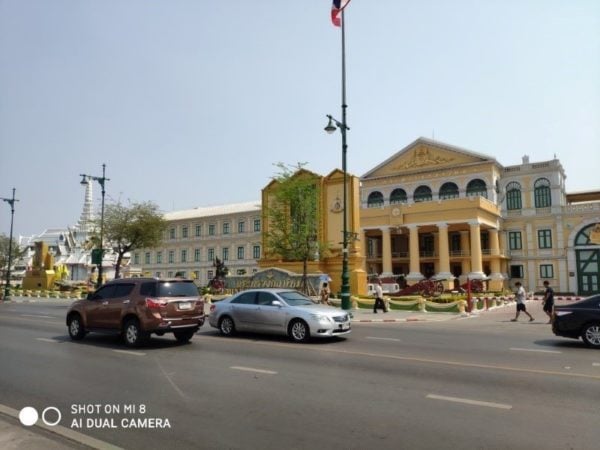
No matter what road you’re on, always be wary of poor road conditions, potholes, loose gravel, and debris.
If you’re driving on these roads for the first time, avoid driving at night to reduce the risk of accidents.
Danger can also come from stray animals like street dogs that lie in the middle of the road or dart across moving cars. This is not so much a problem in Bangkok anymore, but still common among the islands and rural parts of Thailand.
Street dogs can be particularly difficult to spot at dusk, so you should keep a lookout for them at all times.
Important Driving Regulations
Coming from another country, driving in Thailand can feel like an entirely different world — especially if you come from the West.
Although the basic fundamentals are the same, there are stark differences you need to be aware of.
Let’s discuss some key differences that may present a challenge while adjusting to driving in Thailand.
Driving on the Left Side of the Road
Depending on which country you come from, this may not be a pressing issue.
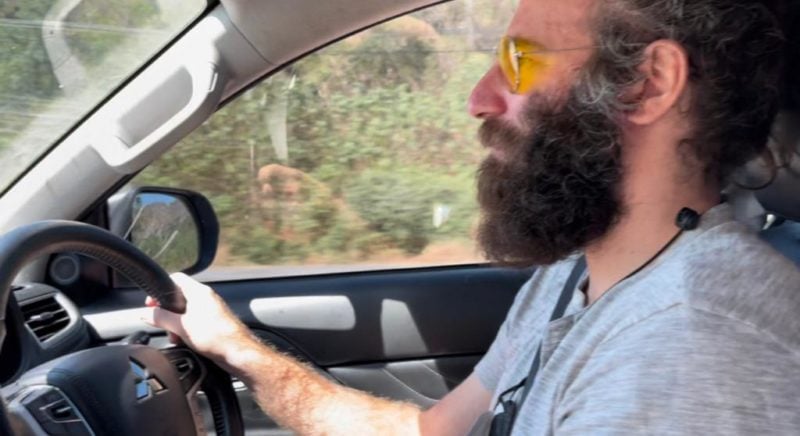
However, if you come from a country that drives on the right side of the road, such as the U.S., you might find operating a motor vehicle on the left side to be a bit discombobulating at first.
I was challenged by not only driving on the left side of the road but also by having the steering wheel on the right side of the vehicle. Admittedly, in the beginning, this was quite disorienting for me, but sure enough, with practice, I was able to acclimate.
Also keep in mind that if you drive a manual transmission in Thailand, you will shift with your left hand, not your right.
Like all countries, there are traffic laws, rules, and regulations that need to be followed to keep everyone safe on the road here in Thailand.
Highway Speed Limits
Depending on what section of the highway you’re on, the speed limit will range from 80km per hour to 120km per hour.
In the fast lane, you need to drive faster than 90km per hour or 100km per hour, depending on the highway.
If you’re unable to keep up with the speed limit, avoid using the fast lane.
City Speed Limits
Although not always clearly marked, in large cities such as Bangkok and Pattaya, main-road speed limits are typically 80km per hour. However, you shouldn’t exceed 30km per hour on residential and smaller streets.
In practice, no one really pays attention to speed limits when driving in the city. And you won’t be able to drive faster than 80km per hour anyway because of traffic.
Vehicle Right of Way
The concept of who has the right of way can sometimes be left up to interpretation.
Here’s an example to illustrate that statement:
In obvious situations such as traffic lights, the concept of who has the right away is self-explanatory and follows the same protocols as any other country.
However, in situations such as intersections without traffic lights, stop signs, and roundabouts, even after many years having a car and driving in Thailand, I still have trouble giving a definitive answer on who has the right of way.
While there are official Thai laws that dictate who has the right of way in these situations, it is my observation and experience that no one adheres to a standard protocol.
My rule of thumb in Thailand is to never assume you have the right of way. Instead, you should wait until you are sure that it’s safe to proceed. In some occasions, you can rely on signals or other drivers’ gestures to help you determine when to go.
Lane Markings
Like most countries, lane markings indicate protocols, such as u-turn lanes and passing lanes. Be aware of solid line lane markings as they prohibit lane changes and passing.
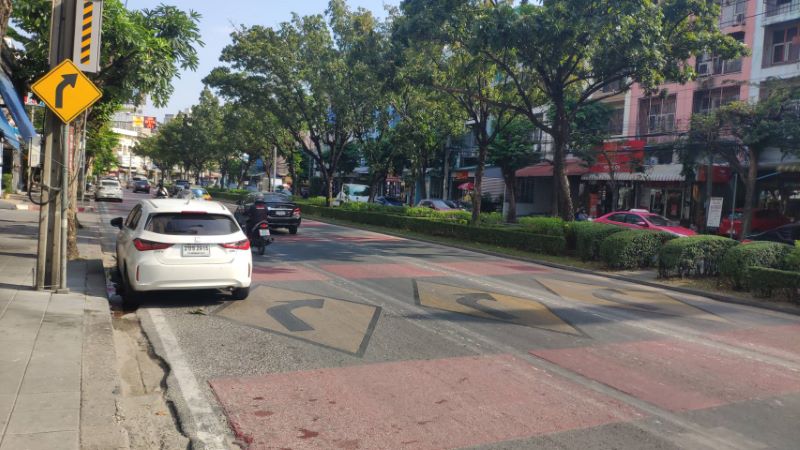
However, some drivers don’t adhere to this.
Stop Signs
Unlike my home state of California, where you can get cited for what is called a “rolling stop” at a stop sign, Thailand stop sign laws are loosely defined.
From my experience, a stop sign in Thailand is more or less of a suggestion, and you should always exercise your best judgment when approaching a stop sign.
Intersections Without Stop Signs
Many sois and small streets don’t always have a stop sign present. In this case, it’s imperative to always use your best judgment when approaching these intersections.
Challenges
Driving in Thailand isn’t easy. Let’s take a look at challenges you will find on the street.
Traffic
In general, traffic in Thailand can be overwhelming, especially in city areas of provinces like Bangkok, Chiang Mai, and Phuket.
If you’re new to driving in Thailand, try to avoid larger cities until you become more confident in driving.
My advice is to practice driving in smaller sub-districts and less crowded provinces before taking on the intimidating task of driving in larger, congested city traffic.
Be Aware of Motorbikes on the Road
While on the subject of traffic, be aware of many different types of vehicles sharing the road, from motorbikes to large trucks, from bicycles to tuk-tuks — it’s imperative to be aware of your surroundings.
Take into consideration unfamiliar streets, narrow sois (lanes), and motorbikes zooming in and out of traffic, and your dreams of driving in Thailand may seem more like a nightmare.
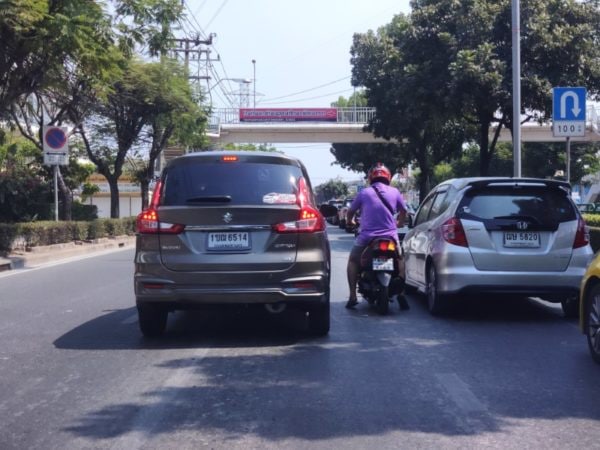
Due to the size of motorbikes and tuk-tuks, they can more easily go unnoticed in your vehicle’s blind spot.
Make a habit of signaling and always checking your mirrors and blind spots before changing lanes.
Soi Dogs
Not only do you need to be aware of other vehicles on the road, you should also be aware of soi dogs especially when navigating a small soi or rural area.
Although most soi dogs are aware and manage to avoid oncoming vehicles, I have also observed odd behavior with some dogs.
Some have an unusual habit of laying right in the middle of the street, and sometimes can be very stubborn and will refuse to move.
A few honks of the horn should do the trick, however, don’t always assume they will move. Its best to try to drive around them when possible.
Driving Etiquette and Gestures
While on the subject of gestures, although driving in Thailand can seem chaotic, Thai culture is very polite, and that usually translates into their driving etiquette. It is quite rare to hear unwarranted honking and cases of road rage.
Of course, there is always the exception of someone having a bad day, and their etiquette may reflect poorly while on the road.
You should also familiarize yourself with common gestures drivers in Thailand use while on the road. The head nod is one of them.
Passing Other Vehicles
Learning when to safely pass another vehicle is important when driving outside of city areas.
Although the law says you should use a right lane to do it, there are some drivers who do it using the left lane.
If you’re driving in a mountainous area, don’t overtake unless you see that the road is clear. If you’re in a rural area, be extra careful of street dogs and kids. They may suddenly run into the road.
Many truck drivers in Thailand give signals to overtake them by quickly flashing their turn signals to the left and then to the right. They may also drive slightly left in the process too.
Using Signals
Similar to driving in your home country, you should always signal before making a turn. However, don’t expect other cars to do the same.
Keep Distance with Other Cars
You should also keep your distance with other cars, especially when driving behind taxis.
Sometimes, they can stop abruptly without signaling to pick up or drop off passengers.
Hazard Lights (Emergency Lights)
No matter what country you come from, I’m sure we can all relate to the annoyance of other drivers inappropriately using their hazard lights for non-emergencies, such as parking illegally just to run in and grab a morning coffee.
However, I have also learned to appreciate how the Thais use their hazard lights to better communicate with other motorists while on the road.
For example, Thai drivers will use their hazard lights to warn other drivers of potential hazards on the road or to indicate an emergency sudden stop in traffic. If you see other drivers flashing their hazard lights, pay attention to your surroundings. Chances are they are trying to warn you of potential danger.
Some drivers use hazard lights as a way to say “thank you” by blinking them for a second. Thai drivers also use hazard lights when they park temporarily or are about to pull their cars into a parking spot.
Finally, when you want to turn into a street or parking lot by cutting across on-coming traffic, drivers may slow down and use their hazard lights to let you (and the drivers coming up behind them) know that you can turn in front of them.
Head nods
Head nods will typically apply more to motorbikes, as you may not be able to see the driver through the tinted windows of their vehicle when driving a car.
If someone nods their head up, this means they are giving you the right of way. You can reply by bowing with a simple downward head nod as an acknowledgment, as well as thanking them for the right of way. Or vice versa; you may see other motorists bowing with a head nod down to indicate that they are taking the right of way.
With the concept of who has the right of way loosely defined, I find myself mostly relying on common sense and instincts, as well as communicating with other motorists to determine when it’s safe to go.
Parking
Many shopping malls offer free parking for the first 15 minutes to two hours. After that, you are charged around THB20 to THB50 per hour, depending on a location.
You can get extra hours of free parking if you spend a minimum amount inside the shopping mall. Just be sure to keep your receipts.
Parking on the Street
In less-congested cities and provinces, parking can be a bit of a free for all.
Red-painted curbs are restricted for parking, black-painted curbs are designated for parking, and yellow-painted curbs are designated for public buses and 15-minute loading and unloading zones.
However, it’s not out of the ordinary for someone to come up to you and ask for THB10 or THB20 for parking on the street.
Thais like to call these people the “parking mafia” (although they are harmless). Most times, there long-term residents who look after the parking on the street.
Use common sense and pay attention to parking signs and other parking regulations.
In larger crowded cities, parking your vehicle can be a nightmare. With less space to park, make sure to pay attention to regulations such as no-parking signs, red-painted curbs, and avoid blocking business and residential driveways.
No-parking Sign
There is also a no-parking sign that allows parking on certain days (like odd or even numbered days) or certain times of the day (mornings, afternoons, or evenings).
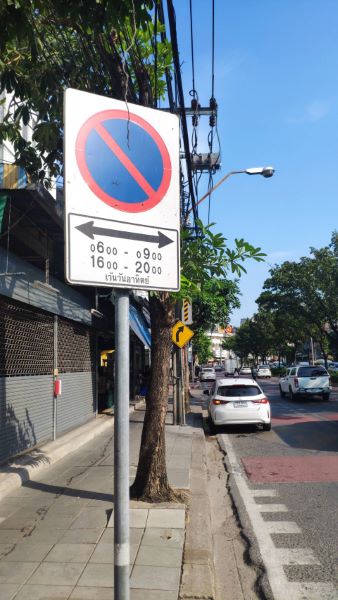
On this no-parking sign, it states that you can’t park during 06:00 – 09:00 and 16:00 – 20:00, except on Sundays (which means you can park at any time on Sundays).
But it’s only written in Thai. If you can’t read Thai, it’s best to follow what other drivers do. If they park there, it’s likely that you can park there, too. When in doubt, ask someone who works at one of the shops on that street.
Not all drivers respect no-parking signs. They may park in a no-parking area. So, follow them at your own risk.
Parking Tickets
Parking tickets are not common. However, police do issue them when warranted.
Parking tickets are usually accompanied by a police tire lock. This once happened to me in Phuket, where I parked my car in a no-parking zone, and to my unpleasant surprise, I found a lock on my tire.
This is Thailand’s method to ensure that you pay the parking fine. You will have to contact the local police station that issued the ticket and pay it in order for them to remove the lock.
If memory serves, I believe I had to pay THB500 for the ticket. Financial concerns aside, it can be a very stressful and inconvenient experience. Therefore, it’s always best to follow parking regulations to avoid the expense and inconvenience.
Driving on Different Scenarios
In this section, you are going to learn about different scenarios when driving in Thailand.
Driving on the Highway
Similar to the massive three- and four-lane highways you find stretching throughout the U.S., Thailand’s highways are typically between two and three lanes wide.
Traffic during rush hour can move at a snail’s pace in Bangkok.
One key factor to note is the correct use of the fast lane in Thailand. Protocol dictates that the right lane (the fast lane) is to only be used for passing slower vehicles.
However, when there is a steady flow of slower traffic in the left lane, I typically find myself using the fast lane for long stretches of the highway.
However, according to Thai law, using the fast lane inappropriately can warrant a ticket.
A rule of thumb is this: when you drive in a fast lane and the car behind you is driving faster than you, you should change lanes and let that car pass you.
If in any doubt, try to follow the correct protocols of the fast lane to the best of your abilities.
Driving on an Expressway
There is an expressway throughout Bangkok, as well as tollways to nearby provinces such as Chonburi, Ranong, and Kanchanaburi.
It costs between THB 20 to THB 240 baht to use these expressways, depending on the distance.
You should be extra careful when driving on an expressway since Thais can drive really fast there.
There are also reckless drivers who exceed the speed limits and continuously pass other cars.
As a rule of thumb, the right lane is for passing only. So, if you do not drive fast enough, it’s better to use the middle lane.
However, you still cannot avoid traffic jams on an expressway during rush hours. Sometimes, traffic on the expressway can be heavier than on a normal road. Check your GPS.
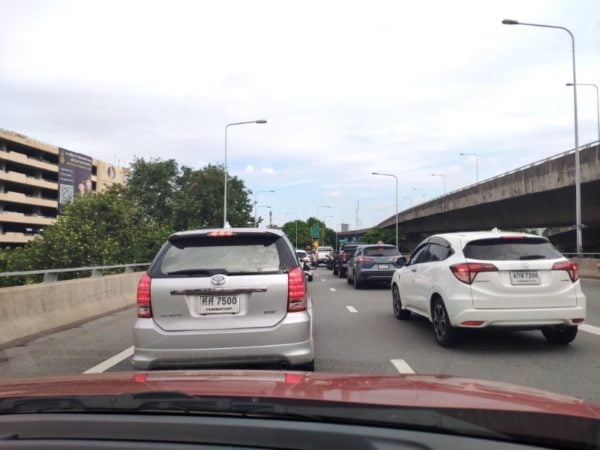
When using an expressway, you can pay by cash or install an Easy Pass on your car for cashless payment.
Navigating Small Sois
Sois span throughout Thailand’s cities.
Using sois can help you avoid main road traffic. However, there are many disadvantages and cautions to be aware of.
Many sois are very narrow and not suited for larger vehicles. They also tend to be under-maintained with many potholes.
The most important factor to be wary of is that they are plagued with many blind corners and intersections without stop signs.
This is where all your experience and training will come full circle. Be diligent and aware of other motorists, soi dogs, and pedestrians sharing the lane.
Driving During Heavy Rain
If you live in Thailand year-round, or plan to visit Thailand during the monsoon season, driving in heavy rain is inevitable.
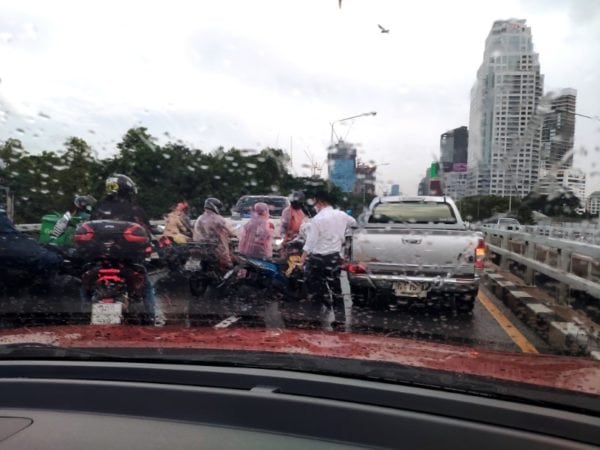
Heavy rain fall in Thailand can cause poor visibility, flash flooding, and poor road conditions.
Besides being cautious while driving in these conditions, my advice is to drive slower, take extra caution, and always check to ensure that your vehicles windshield wipers are in working order.
This especially applies if you’re renting a vehicle.
Emergency Vehicles
In most Western countries, when it comes to emergency vehicles, the law says that all other vehicles must pull over to let the emergency vehicle pass.
Here in Thailand’s cities, the law is not always upheld, simply because traffic gets so bad that drivers have nowhere to pull over to.
From my observation, emergency vehicles are well trained to maneuver through congested traffic.
Even if you can’t completely pull over, do your best to get out of their way.
Navigation
Learning to drive in Thailand is only half the battle.
The challenge of navigating unfamiliar roads, not to mention the never-ending matrix of small sois and back alleys, all while paying attention to other potential hazards such as potholes, pedestrians, and motorbikes, can be demanding.
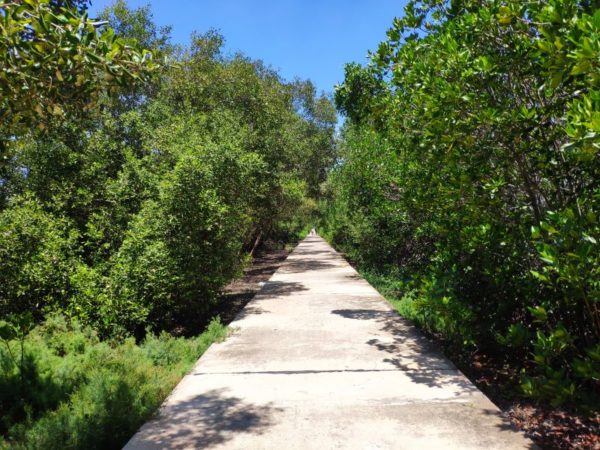
Fortunately, I find Google Maps to be very helpful. But it does have its limitations. Yes, Google Maps will help you get to your desired location. However, it may not always take you on the best route. Google Maps’ algorithm will try to pick the fastest route available. However, the fastest route isn’t always the easiest.
And because some tollways and highways are built over main roads, Google Maps may have trouble determining which level you’re on and ask you to either enter or exit roadways where none are present. In other cases, Google Maps will ask you to exit a highway, only to ask you to re-enter it later on.
In Thailand, even the sois are considered streets on Google Maps. Many times, I find Google sending me to challenging narrow streets that are not well suited for larger vehicles.
This can be remedied by checking the Google Maps settings and making sure that it is set for vehicles and not motorbikes. You can also set Google Maps to avoid highways and tollways.
However, even with the correct settings, Google Maps is still prone to sending you down unfavorable sois and back-alleys.
My advice is to always double-check Google’s suggested routes and, if possible, stay on the main streets and avoid sois, especially if you’re driving a larger vehicle.
When you’re driving outside of Bangkok, unless you are familiar with that area, you should avoid using a route with four-digit numbers. These numbers indicate rural roads, which might not be well maintained.
Dealing with Traffic Police
If you come from a western country, you’ve probably experienced the sinking feeling of spotting bright flashing police lights in your rear-view mirror.
In America, even the smallest of infractions can be costly and lead to other consequences, such as getting points on your driving record and increasing your insurance rates.
However, Thailand has a different approach to enforcing traffic laws.
Police Checkpoints
Rather than pulling vehicles over, law enforcement will set up police checkpoints throughout the city and on major highways.
They are good at their job, and they usually place checkpoints around blind corners that make them very hard to spot and difficult to avoid.
On the highways, they usually place them on province borders.
If you see a driver in the opposite lane suddenly flash their high beams a few times, it’s an informal gesture telling you that there’s a police checkpoint up ahead.
You can identify what type of checkpoint they are by the color of the officer’s helmets.
- White helmets are worn by traffic police
- gold helmets are worn by officers enforcing other laws, such as illegal substances, paraphernalia, and other, more serious infractions.
The best way to avoid any issues with the police is to always follow traffic rules to the best of your ability, and always be polite to the officers. They may also ask to see your driver’s license.
Courtesy goes a long way and will certainly have a positive influence when interacting with the police.
Dealing with Tickets
If you plan on driving in Thailand often, you are bound to get a ticket eventually. Typically, traffic tickets range from THB500 to THB2,000 depending on the infraction. And you will have seven to 14 days to pay the ticket.
You can pay at a police station, post office, or use your bank app under “payment” menu and choose “Royal Thai Police – Police Ticket.”
If you haven’t paid your ticket, you can do so online at the same time you pay your annual car tax.
Please note that trying to pay off a police officer to avoid a ticket is illegal, and if someone records the transaction and shares it with the right outlet, you could get into trouble.
If you get a ticket and have the option to pay it on the spot — like at highway checkpoints — always be sure you get an official receipt for the transaction. Police officers can print it out of a machine on the spot in most cases.
Plus, if you’ve gotten a ticket for, let’s say, not having a Thai driver’s license, and you get pulled over again for the same offense on or around the day you got the ticket, you can show it to the police officer and they most likely won’t give you another ticket.
Just let them know you’re in the process of resolving whatever issue you got a ticket for, whether that was not having a driver’s license, not having an up-to-date inspection sticker, and so on.
Traffic Cameras
Traffic cameras are placed throughout Thailand’s cities and on highways, mainly to catch those who drive beyond the speed limit.
Tickets will be mailed to the vehicle’s registered address and can range anywhere from THB500 to THB2,000, depending on the infraction.
I have fortunately not had any personal experiences receiving a ticket in the mail, but you will have anywhere from seven to 15 days to pay it.
Additional Driving Tips and Tricks
Although driving in Thailand can be chaotic, as you become more familiar with it, you can’t help but feel that perhaps there is order in the chaos.
Here are additional tricks to help you drive safely in Thailand.
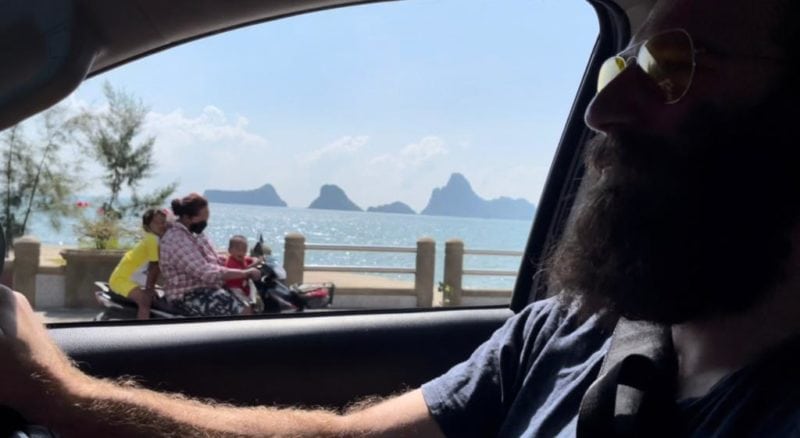
1. Know the risky habits of local drivers
Thailand highway traffic can move at quite a fast speed, and the prevalence of scooters and motorbikes increases the number of moving factors to watch out for.
You’ll find that scooter and motorcycle drivers will pass on both sides, and use unconventional ways of moving through traffic, such as using the sidewalk for short periods.
And, although there is a law against using mobile phones while driving, some people both text and talk on the phone, even when driving motorbikes.
Being aware of these risky habits can go a long way in preventing collisions. Always be aware of your surroundings and pay attention to drivers using their phones, who may drift lanes, drive slower than the speed of traffic or are less likely to use their turn signals.
2. Understand Thailand’s highway code
To drive legally in Thailand, you must carry either a Thai driving license or valid international driving license for the class of vehicle you wish to operate. Seatbelt laws only apply to the driver and front seat car passengers.
All scooter and motorbike drivers are required to wear helmets, though many on the road don’t. The blood- alcohol concentration limit is 50mg per 100ml of blood. Be safe and always wear a helmet, rely on public transport when drinking and buckle up despite lax laws.
3. Know the basics
You must follow all laws, rules, and common sense when sharing the road in Thailand.
Thailand is like Britain, where people drive on the left side of the road. But if you’re from one of the majority of other countries in the world that drive on the right, you’ll have to adapt.
This is especially relevant when making turns, so you don’t find yourself turning into oncoming traffic.
In addition, you should always adhere to the fundamentals, such as traffic lights, speed limits, and common courtesy. However, In Thailand, some nuances, such as who has the right of way, can sometimes be up for interpretation at best.
In other words, rather than relying on everyone to follow a definitive set of rules, driving in Thailand is best done by knowing common driving practices while using common sense and having a keen sense of awareness.
4. Know the way
Each day, take the time to understand the routes you will take. Don’t let one-way roads and tricky spurs surprise you on the road when you have little time to react.
Drive with the flow of traffic and stay diligent and aware of other smaller vehicles such as tuk-tuks and motorbikes.
Furthermore, it’s important to recognize that different cities and provinces embrace different styles of driving and etiquette.
For example, Bangkok drivers tend to be more aggressive, and they exhibit more of a rushing big-city mentality.
While drivers from other cities like Chiang Mai have a more go-with-the-flow nonchalant driving style.
If you plan on traveling from city to city, try to match the style and mentality of the particular city you’re driving in to avoid disrupting the flow of traffic.
5. Don’t rush and keep left
While Thai drivers love to zip around, they will not honk or pressure slower drivers to speed up as long as slow drivers keep left and allow traffic to move around them.
Use this to your advantage to drive carefully and confidently, giving yourself enough time to anticipate turns, changes in road conditions and the actions of other drivers.
Now, on to You
As I mentioned at the start of the article, driving in Thailand is not for the faint of heart. However, with practice, a confident and motivated driver should have no problem driving in the country.
Although driving in Thailand is not impossible, at the same time, the challenges shouldn’t be underestimated either. Your success driving here ultimately depends on your confidence, abilities, and determination.




